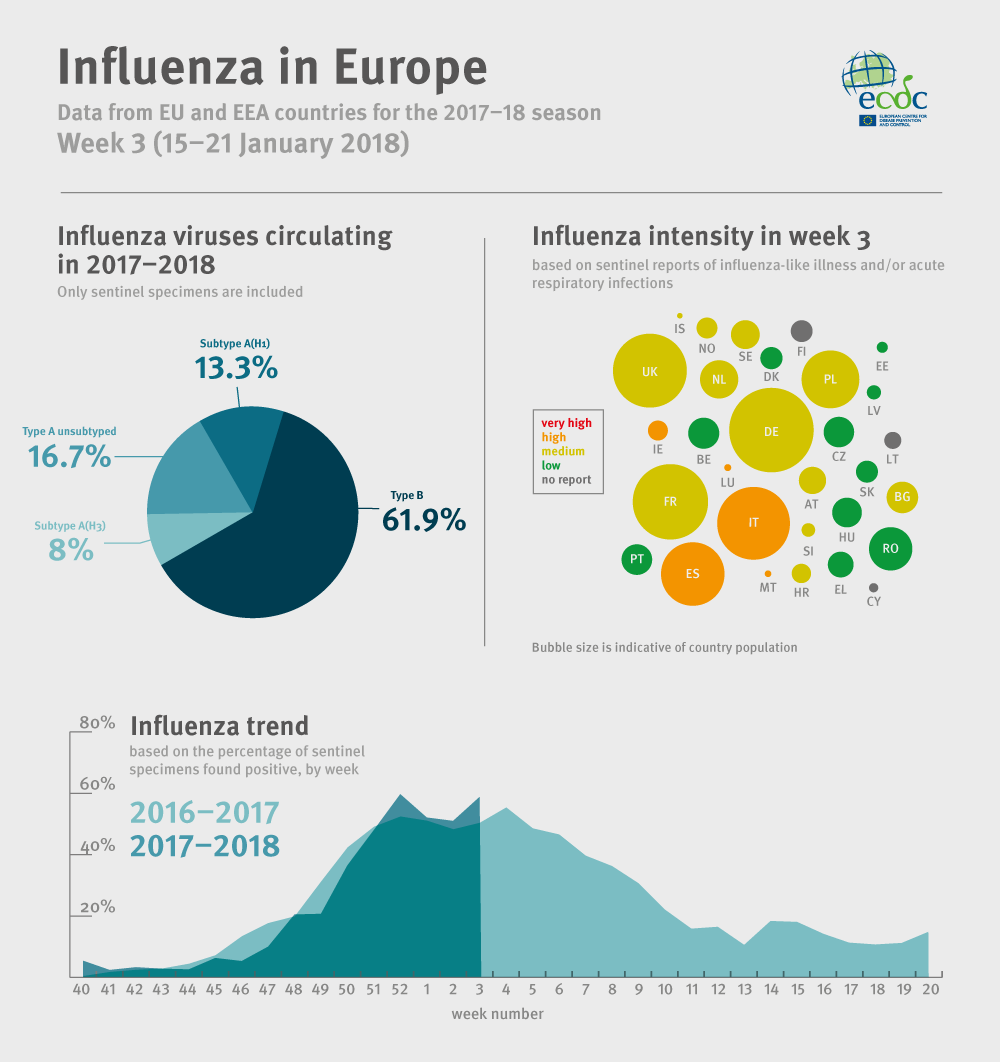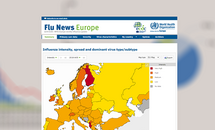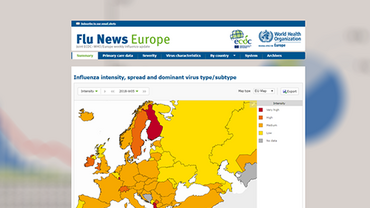Weekly influenza update, week 3, January 2018
Influenza activity was widespread in the majority of reporting countries, while increasing activity was observed in eastern European countries. Both influenza types B and A viruses were co-circulating with a higher proportion of type B viruses. Different patterns of type and A subtype circulation were observed between countries in the Region. Of the individuals sampled, on presenting with ILI or ARI to sentinel primary healthcare sites, 52% tested positive for influenza viruses, a slight increase compared to recent weeks (42–50%).

Download

Influenza in Europe infographic - week 3/2018
- EN - [PNG-99.21 KB]
2017/18 season overview
- For the Region overall, a higher proportion of type B viruses compared to type A viruses has been detected in sentinel sources, whereas in non-sentinel sources the proportions are roughly similar. Of the type A detections from sentinel sources, A(H1N1)pdm09 viruses have outnumbered A(H3N2) viruses, while in non-sentinel sources more A(H3N2) viruses were reported than A(H1N1)pdm09 viruses.
- For type B viruses from both sentinel and non-sentinel sources, B/Yamagata lineage viruses have greatly outnumbered those of the B/Victoria lineage. B/Yamagata lineage is not included in the trivalent seasonal influenza vaccine.
- Different patterns of dominant type and A subtype were observed across the countries in the Region, which may be due to the relative weights of information being derived from sentinel, non-sentinel and severe influenza sources of information.
- While low in number, 64% of the genetically characterized A(H3N2) viruses belonged to clade 3C.2a, the clade of the vaccine virus described in the WHO recommendations for vaccine composition for the northern hemisphere 2017–18, and 36% to clade 3C.2a1, with viruses in both clades being antigenically similar.
- A situation analysis that describes the early season evolving epidemiological pattern was published by WHO Regional Office for Europe in January.
- An early risk assessment based on data from EU/EEA countries was published by ECDC on 20 December 2017.
- Vaccine effectiveness estimates from Stockholm country report 31% (95%CI: 14–45) among the patients 65 years or older. Sweden reports a mainly B virus circulation so far.
- Based on data submitted to the EuroMOMO project there has, over the past weeks, been increased all-cause mortality among the elderly, notably in some countries in the south of the European Region and the United Kingdom (Scotland).
- Additional information on global influenza activity is available from WHO’s biweekly global updates.







